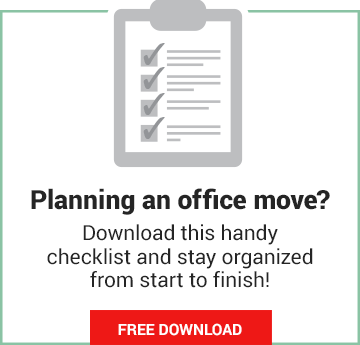Five Features That Every Business Phone System Needs

No matter the nature of your business, your phone system is critical to internal and external communication and can determine how smooth and efficiently your business runs. Over the last few decades, modern business phone systems are benefiting from the proliferation of new technology and applications. But with more choices and options for features than ever before, it’s easy to get overwhelmed. Some can lead to smaller efficiencies while others can affect wider systemic changes in your company so knowing which feature does what and how each delivers better outcomes is key to choosing the right features for your business.
Here are five key features every business phone system should have to help you thrive and be successful:
1. Mobility Functions
Chalk it up to millennials in the workforce or greater demand for flexibility from employees but there’s no denying the upward trend of an increasingly mobile workforce. This can range from employees who commute between offices or telework to those who are on frequent business trips and based in the field. A mobile-friendly phone system that seamlessly integrates between desktop or mobile phones, can automatically transfer calls in progress and allows employees to work from anywhere, enabling them to do their job the same way they would in the office.
By connecting your business phone network to these remote workers on their cell phones and home lines, or transferring the calls to their designated phones, you can stay competitive because customers dial the business line and the call is routed to the appropriate contact, no matter where they’re located or what device they’re using. Even if the employee leaves the company, there’s continuity in the phone line, not to mention, it also keeps an employee’s personal number confidential.
2. Find me, Follow me (FM/FM) Calling
Let’s face it, most businesses can’t afford to miss calls. Missed calls can equal missed business opportunity. With Find-me, Follow me, your phone system can liberate you from being chained to your desk for a phone call. Think of Find me, Follow Me as a sophisticated call routing feature where you can program calls to any device based on your location and availability.
A phone system with FM/FM can ring all your devices simultaneously or try a chosen sequence you program it to. Essentially you can select a list of numbers you want the system to reach you at and it will attempt each number until the call is answered or the list is exhausted. For example, a call can go to your office line; if you don’t answer, it will try your cell; if there’s still no connection, the call redirects to a coworker; and if there’s still no answer, only then does it go to voicemail.
3. Unified Messaging (UM)
IT administrators have historically had to manage voicemail, telephones, email networks and data as separate entities. With UM, users can now access their collection of voicemail, email, fax and text messages in one single interface — typically via a computer app that comes with the phone system. Having one mailbox syncs all the necessary messages you need in one spot so you don’t have to check multiple devices each time.
UM also helps to drive efficiencies, foster collaboration and customer service through your phone system. Some advanced systems even change the format of messages to fit the device receiving it. For example, UM can take a telephone voicemail and compress it to MP3 so it can be emailed it to worker who is not in cell range. Some more advanced systems even allow for a voicemail to be transcribed and sent to an email as text files. This flexibility with UM means you can easily and quickly view, delete, search or sort all your messages from anywhere.
4. CRM Integration
By definition, a Customer Relationship Management (CRM) app allows you to manage your relationship with current and prospective clients. With a savvy CRM, the next time you call a contact, you can see the big picture and know exactly what to talk about and be aware of what your colleagues have already said before.
A phone system with CRM integration gives you a 360 degree view of real-time information about your contact and ensures easy dialing and call logging. Not only can you see who a contact spoke to the last time your company reached out but you can also log interactions and notes with pertinent details for future calls. CRM integration controls how users place outgoing calls and manage the phone experience when people call into your organization.
5. Call Recording/Reporting
Call recordings can be used to train new employees with historical data. Recordings also give management insight into how employees are handling their calls so they can also review over calls with employees to address adjustments or improvements. The feature is simple to administer and can be configured so recordings are automatically emailed or texted if necessary.
A call reporting mechanism allows an administrator to have concrete metrics for the business that can directly influence operational decisions. Users can access detailed info like average talk times or even download reports on specific extensions and stats on entire call groups. Combined, these feature are essential to assuring quality and improved services for your customers with direct impact on sales, training and management.


